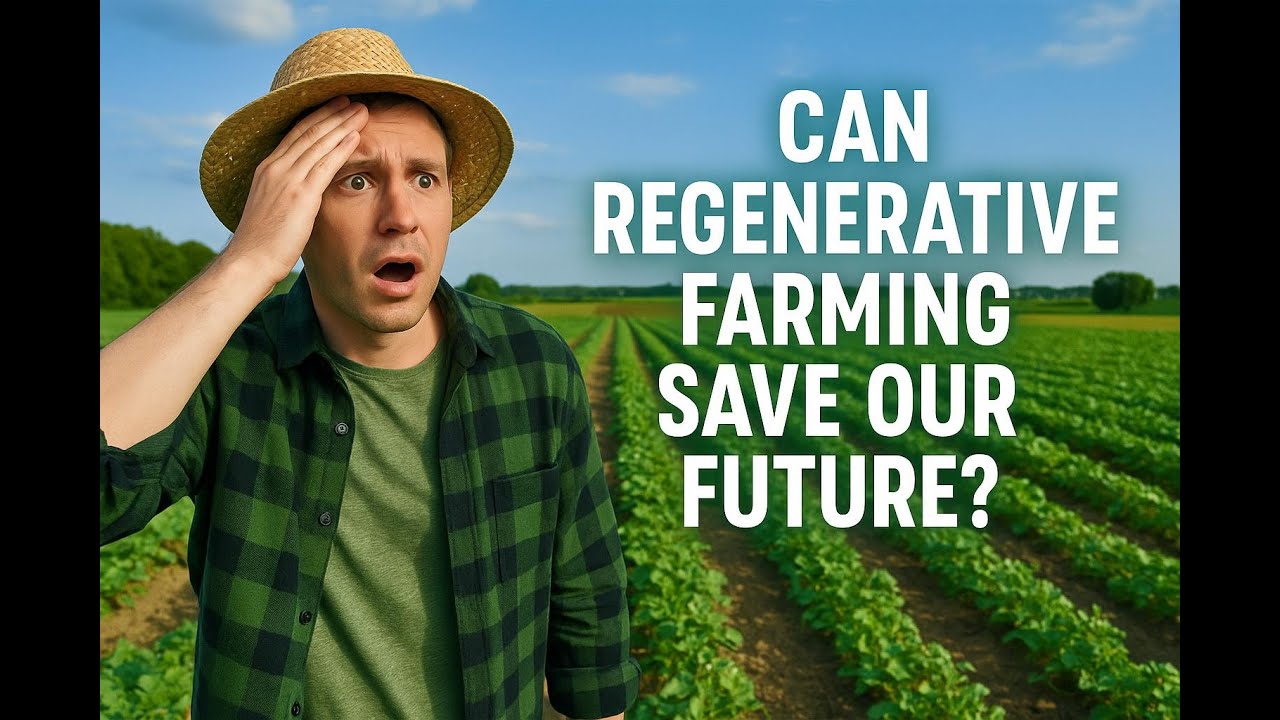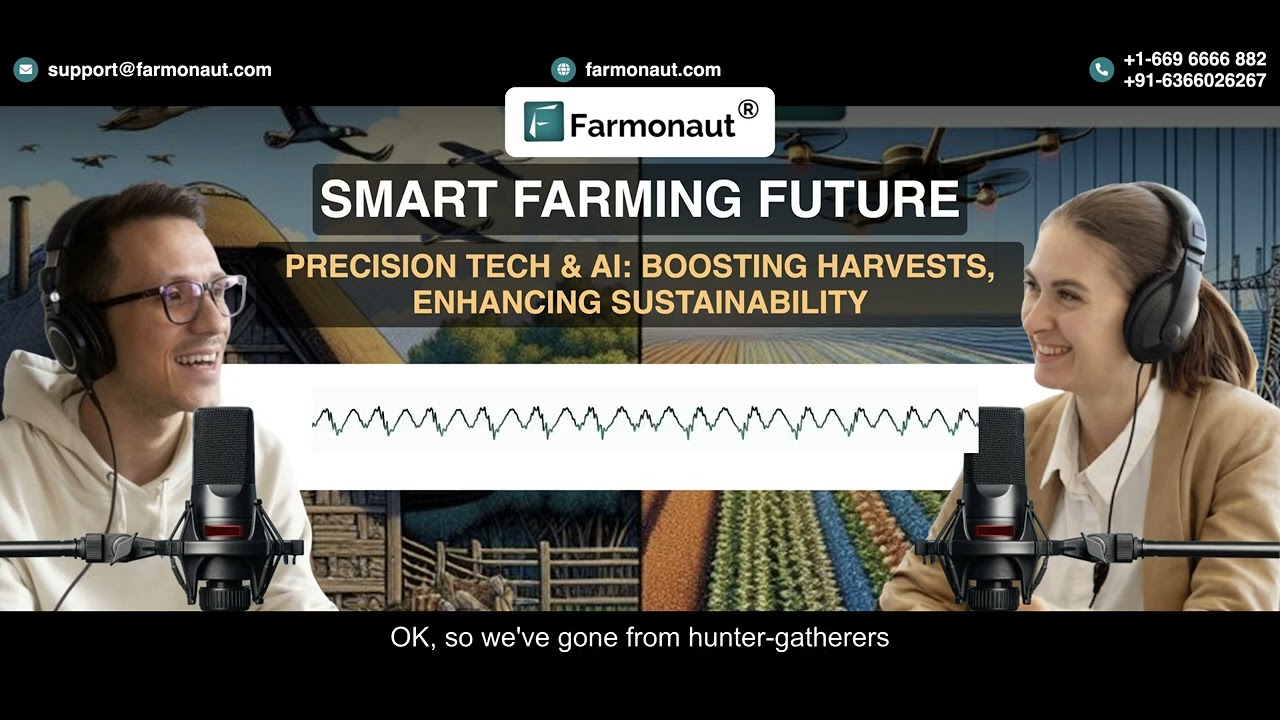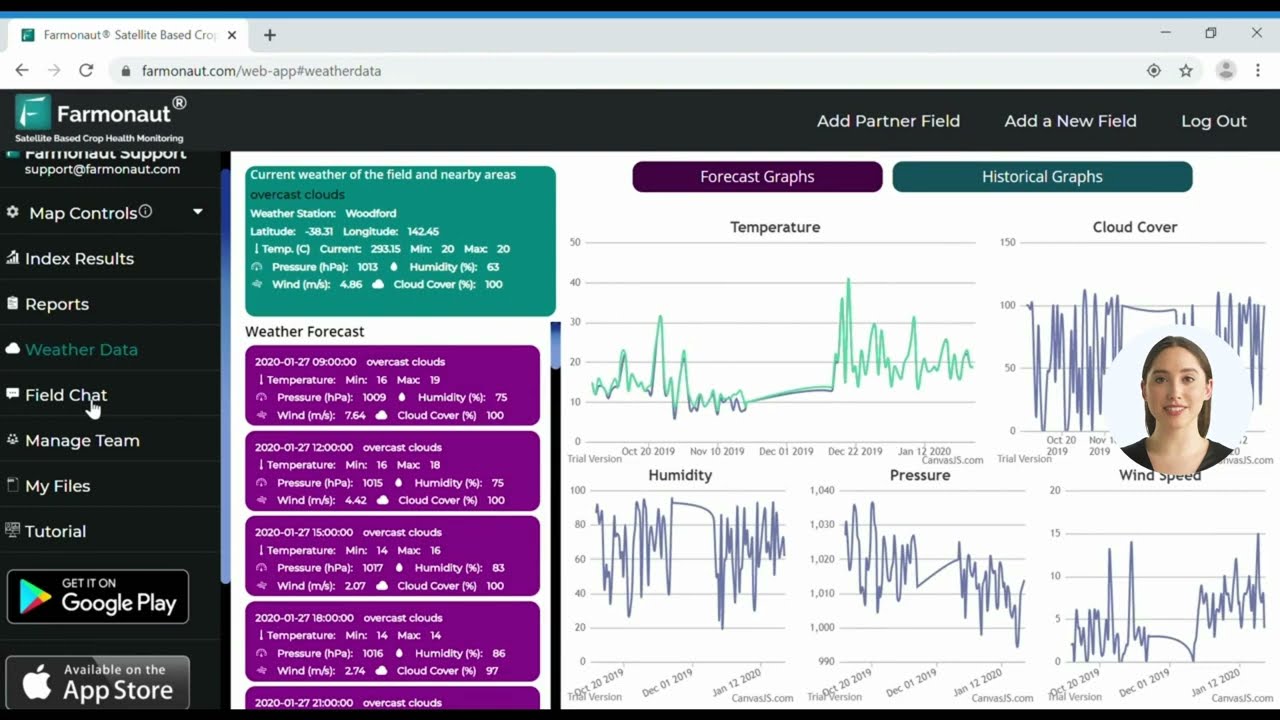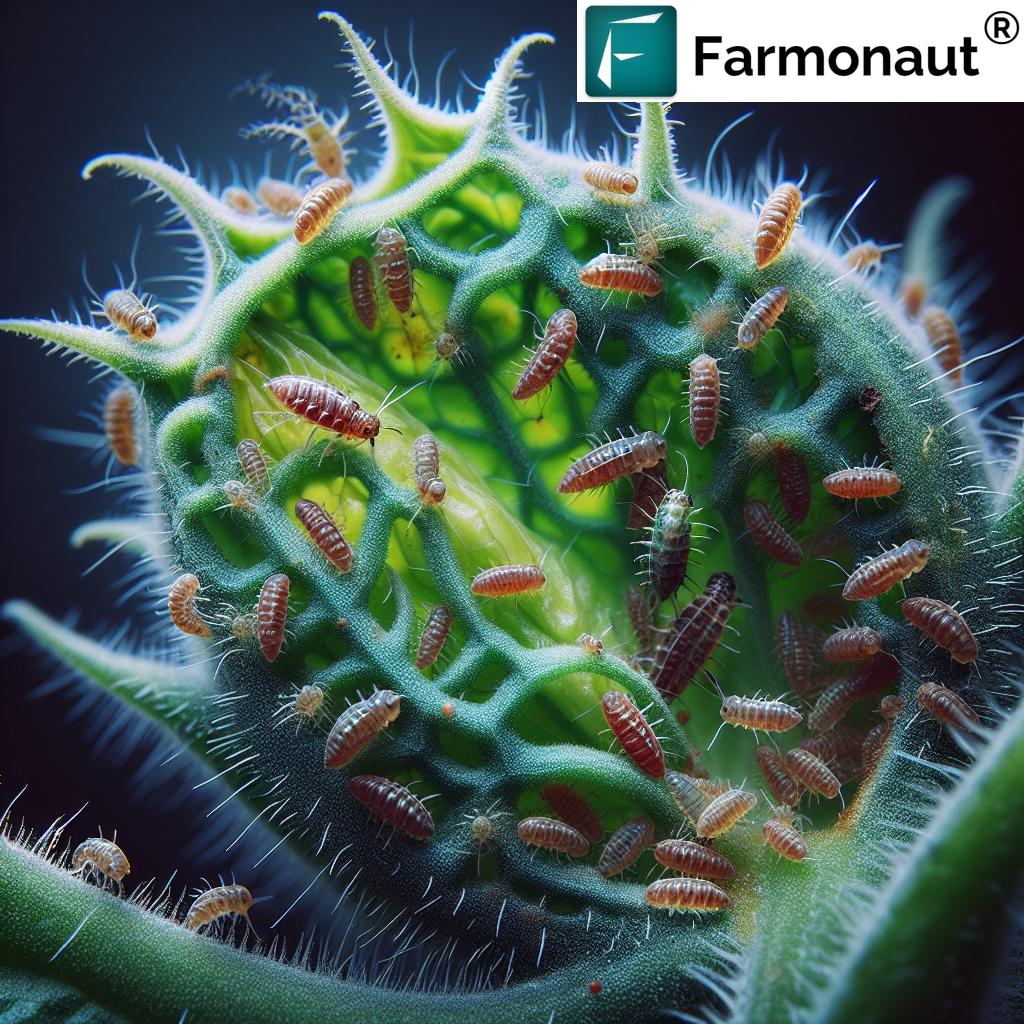Farming and Sustainability: Top 5 Dairy Practices 2026
“In 2026, sustainable dairy farms will reduce water usage per liter of milk by up to 30%.”
“Over 60% of top dairy farms will adopt eco-friendly manure management practices by 2026.”
Sustainability in Dairy Farming: A Pathway to Resilient Agriculture in 2025
Farm sustainability is entering a new era where farming and sustainability are closely intertwined—especially in the dairy sector. As we approach 2026 and face ever-growing food and resource challenges, the sustainability in dairy farming is no longer a choice; it’s a necessity for ensuring resilient, productive, and ethical agriculture.
The farming and sustainability nexus points to a way forward for global agriculture: efficiently using precious resources, improving animal welfare, and promoting eco-friendly practices that balance environmental stewardship with economic viability. As climate change intensifies and population grows, the dairy industry’s innovations in sustainability play a critical role in nurturing resilient farms for 2026 and beyond.
Understanding Sustainability in Dairy Farming
Farming and sustainability in the dairy sector entail a holistic approach that integrates economic resilience, ecological balance, and social responsibility. This multifaceted paradigm revolves around efficient resource use—covering water, feed, energy—and spans the reduction of greenhouse gas emissions, improvement of animal welfare, conservation of soil and water, and broader ecosystem health.
- Economic Sustainability: Ensures ongoing profitability and supports livelihoods of farmers and communities.
- Environmental Sustainability: Focuses on responsible resource use, carbon footprint reduction, and biodiversity protection.
- Social Sustainability: Emphasizes fair labor, community engagement, and animal welfare.
The sustainability of dairy farming is deeply influenced by how major and small farms adopt innovative technologies and ethical systems. This ensures sustainable agriculture is both resilient and adaptable, pushing the sector towards higher productivity and long-term viability.
Key Drivers of Farm Sustainability in Dairy (2026)
The following are the key elements shaping sustainability in dairy farming:
- Efficient Resource Management: Using precision agriculture tools and data to optimize water, feed, and energy inputs.
- Reducing Greenhouse Gas Emissions: Adopting innovations to curb methane and other emissions.
- Animal Welfare: Improving housing, nutrition, and overall health for high productivity with less resource use.
- Supporting Small Farm Sustainability: Empower smallholder farmers with access to technologies and fair market opportunities.
- Soil and Water Conservation: Enhancing soil health and protecting water quality through best practices.
In 2026, the dairy sector is placing farm sustainability and sustainability in dairy farming at the top of its agenda. Let’s explore these top five practices for building a future-ready, eco-friendly dairy industry and their measurable impact.
Top 5 Dairy Practices (2026) – Comparative Feature & Impact Table
| Practice Name | Description | Estimated Resource Savings | Impact on Animal Welfare | Environmental Impact |
|---|---|---|---|---|
| Efficient Resource Management | Precision tools, automated monitoring, real-time data for optimal feed, energy, & water use | Up to 30% water, 15% feed, 20% energy savings | ⭐⭐⭐⭐ (High: Reduced stress, healthier diets) | 40% less water runoff, 25% lower waste |
| Reducing Carbon Footprint | Methane-reducing feed, improved manure-to-energy, agroforestry integration | 20% methane emissions reduction, 10% less feed waste | ⭐⭐⭐ (Moderate: Indirect benefits) | Up to 18% CO₂-equivalent reduction |
| Animal Welfare & Health | Better housing, health monitoring, balanced nutrition, lower antibiotic use | Lower medical costs & up to 15% less feed from optimized health | ⭐⭐⭐⭐⭐ (Excellent: Longevity & wellbeing) | Indirect emissions & waste reductions |
| Supporting Smallholder Sustainability | Digital extension tools, microfinancing, cooperative market platforms | Resource sharing for 10–20% input optimization | ⭐⭐⭐ (Solid: Community-based support) | Reduced marginal land conversion, more resilient ecosystems |
| Soil & Water Conservation | Rotational grazing, cover cropping, smart irrigation, buffer zones | 25% improved water retention, 20% less nutrient runoff | ⭐⭐⭐ (Good: Quality pasture, reduced disease) | 35% lower waterway pollution, richer soil |
This table distills the major sustainability practices that will define top-performing dairy farms by 2026.
1. Efficient Resource Management for Sustainable Dairy Farming
The foundation for sustainability of dairy farming is efficient resource management. Modern precision agriculture continues to reshape how farms utilize water, feed, energy, and land. Strategically managing these elements is not just about cost savings, but also maximizing productivity levels and minimizing ecological impact.
How Precision Tools & Digital Monitoring Lead to Efficiency
- Automated Milking & Feeding Systems: AI-driven and robotic machinery measure and adjust inputs to match animal needs, reducing excess feed and wasted water.
- Sensor-Based Water Usage: Real-time monitoring and leak detection help cut wastage and protect resources.
- Satellite Data & Analytics: Farmonaut’s satellite-powered insights help measure crop health, pasture nutrition, and field moisture, allowing smarter management decisions and timely interventions.
- Smart Energy Use: Automated systems switch equipment on/off based on daily activity, lowering energy consumption and related emissions.
Globally, these modern, sustainable farming practices are boosting milk yield per unit of input, while actively reducing costs and safeguarding the environment.
Did You Know? Farmonaut’s environmental impact tracking, available in their main app suite, enables farms to get actionable, real-time recommendations on efficient resource management, ultimately boosting farm sustainability.
2. Reducing Carbon Footprint and Greenhouse Gas Emissions in Dairy
The livestock sector is responsible for a significant portion of global greenhouse gas emissions, particularly methane from dairy cows. For 2026 and beyond, reducing carbon footprint is an essential driver for agriculture and sustainability.
Innovations Revolutionizing Emissions Reductions
- Methane-Reducing Feed Additives: Supplementing cow feed with amino acids, seaweed, or fats can cut methane emissions by up to 30% per animal.
- Manure-to-Energy Conversion: Biogas digesters and similar systems convert manure into energy, reducing emissions and generating on-farm renewable power.
- Agroforestry Integration: Tree planting around fields boosts carbon sequestration and creates beneficial microclimates.
- Precision Grazing & Pasture Management: Rotational models increase forage quality and reduce supplementary feed, supporting both animal health and lower emissions output.
Tip: For farms aiming to track and certify their carbon footprint and emissions reduction strategies, Farmonaut’s carbon footprinting solution offers precise, satellite-powered measurement tools. This service aligns farm sustainability with regulatory compliance and eco-labeling efforts—crucial for 2026 market demands.
Such integrated approaches not only drive environmental stewardship and sustainability of dairy farming, but also present significant economic and reputational opportunities for both large and small farms.
3. Animal Welfare and Health Optimization: The Heart of Sustainable Dairy Farms
True farm sustainability is impossible without a deep commitment to animal welfare and optimal health. In 2026, the best-performing dairy systems will recognize that healthier, happier cows produce more milk with fewer resources and lower pharmaceuticals use.
Core Principles for Exceptional Animal Welfare & Productivity
- Housing & Comfort: Ensuring animals have clean, spacious, and climate-adapted shelters dramatically improves welfare and reduces stress-related illnesses.
- Balanced, Nutritious Feed: Diets tailored to each animal’s stage of production ensure robust health and steady outputs.
- Monitoring & Early Disease Detection: Wearable sensors, AI-driven analysis, and digital alerts minimize disease outbreaks and unnecessary antibiotic use.
- Reduced Pharmaceutical Dependency: Preventative management, rather than reactive medicine, supports the ethical imperative behind sustainability in dairy farming.
This holistic approach results in better productivity and unlocks the viability of sustainable farms in the eyes of investors, regulators, and consumers—all while strengthening rural community trust.
The adoption of digital monitoring and real-time veterinary advisory—such as those available via the Farmonaut app suite—empowers farmers to boost animal health and welfare while optimizing input use.
“Over 60% of top dairy farms will adopt eco-friendly manure management practices by 2026.”
4. Supporting Smallholder and Small Farm Sustainability
Small farm sustainability is central in global milk production, with smallholder systems providing up to half of the world’s food sources. However, smaller farms face unique challenges: limited access to modern technologies, finance, and markets.
Strategies for Empowering Smallholders in Sustainable Dairy Farming
- Digital Platforms & Extension Services: Mobile apps and Farmonaut’s data-driven advisory lower knowledge barriers, providing field-specific advice and early warnings.
- Microfinancing & Crop Insurance: Using satellite-based verification—such as Farmonaut’s crop loan and insurance APIs—farmers can access capital more securely, supporting productive investments.
- Cooperative Market Models: Community-level aggregation and traceability solutions—like Farmonaut’s blockchain traceability—enable smallholder-produced dairy to command premium prices and fair contracts.
- Educational Outreach: Open-access knowledge sharing and training on sustainable practices strengthen the capacity of small farmers to thrive in a changing climate.
These interventions strengthen community livelihoods and help bridge the digital divide in agriculture and sustainability discussions, making resilient smallholder systems a reality for the next generation.
5. Soil and Water Conservation: Cornerstones of Dairy Farm Sustainability
The environmental impact of dairy production is closely tied to how well soil and water resources are managed. Conservation-oriented practices maintain ecological balance and improve productivity for future generations.
Leading Conservation Practices for Dairy Sustainability
- Rotational Grazing: Carefully timed livestock movement prevents overgrazing, sustains pasture productivity, and increases soil carbon storage.
- Cover Cropping and Green Manure: Planting off-season crops protects against soil erosion and fixes nutrients naturally.
- Smart Water Management: Drip and precision irrigation, enabled by digital tracking, cut water use and runoff.
- Buffer Zones and Riparian Management: Vegetated strips filter runoff and act as biodiversity reservoirs.
Continued investment in soil and water conservation is essential for reducing nutrient loss, lowering input needs, and maintaining farm sustainability, especially in the face of climate change. Advanced geospatial measurement tools, available on platforms like the Farmonaut app, empower farmers to monitor soil moisture, vegetation cover, and field productivity in real time, helping to adopt the right conservation approach at the right time.
Challenges and Opportunities for Sustainable Dairy Farming (2026 & Beyond)
Despite progress, farming and sustainability in dairy face barriers that require coordinated effort:
- High Initial Investments: Advanced technologies for efficient resource management and emissions reduction can be costly to deploy, particularly for smallholder farms.
- Policy and Market Uncertainties: Regulatory changes and shifting market incentives affect adoption and ROI for sustainable practices.
- Knowledge Gaps: Lack of technical knowledge hampers the full implementation of modern, eco-friendly systems.
- Climate Pressures: Unpredictable weather patterns and resource scarcities demand agile responses and resilient systems.
However, 2026 will see new opportunities driven by:
- Government Incentives and Compliance Support
- Private Sector Innovation: Advanced management tools, satellite imaging, and AI-driven advisory poised to make farm sustainability accessible to all.
- Consumer Preference for Ethical Dairy: Traceability systems and certified eco-labels strengthen trust and reward leading dairy producers.
- Digital Platforms: Mobile and cloud solutions democratize knowledge and empower farmers of every scale.
Technologies such as Farmonaut’s satellite data APIs and fleet management tools are revolutionizing resource optimization and transparency for sustainable dairy farms globally.
For developers and organizations looking to build custom solutions, Farmonaut’s Developer Docs provide in-depth guidance for integrating advanced sustainability monitoring directly into existing systems and apps.
Farmonaut: Satellite-Driven Sustainability for Dairy Farming
At Farmonaut, we believe making cutting-edge satellite-driven solutions both affordable and accessible is key to a sustainable agriculture future. Our web, mobile, and API-based platforms enable farmers, businesses, and governments to:
- Access real-time satellite imagery and AI-powered analysis for precision resource management and crop monitoring.
- Track and reduce farm-level emissions with advanced environmental monitoring tools—crucial for compliance and sustainable branding.
- Leverage blockchain-based traceability for transparent, accountable dairy supply chains.
- Improve fleet and machinery management, cutting operational costs and optimizing resource use across large-scale farms.
- Facilitate trusted access to crop loans and insurance with unbiased, satellite-verified field data.
Our ongoing innovations in remote sensing, AI, and digital extension *continue* to help farms of every size pursue sustainability in dairy farming with confidence, transparency, and scalable precision. Learn more about how our platform directly empowers efficient, sustainable agriculture on the Farmonaut Large-Scale Farm Management page, designed for enterprise-grade oversight and impact.
Frequently Asked Questions about Farming and Sustainability in Dairy (2026)
What is sustainability in dairy farming?
Sustainability in dairy farming refers to a holistic approach that balances environmental health, economic profitability, efficient resource management, and social responsibility. It ensures dairy farms can produce nutritious food while protecting ecosystems and rural livelihoods for generations to come.
How can small farms achieve sustainable dairy practices?
Small farms can adopt efficient input use, utilize digital advisory apps, partner in cooperatives, and leverage microfinancing opportunities. Access to real-time data (such as from satellite platforms like Farmonaut) empowers smallholders to optimize their resources and build resilience.
Are sustainable dairy practices profitable?
Yes, investing in sustainability often boosts long-term profitability by lowering costs for feed, water, and energy, enhancing animal health (and thus productivity), opening access to premium markets, and reducing regulatory penalties for environmental damage.
What role does technology play in farm sustainability?
Technologies such as satellite monitoring, AI advisory, and blockchain traceability increase operational efficiency, reduce waste, facilitate compliance, and provide transparent records—enabling smarter, data-driven management for all kinds of farms.
Farmonaut Subscription Options
Ready to accelerate your farm’s journey towards sustainability? Access affordable, subscription-based insights for resource management, satellite-powered monitoring, and AI advisory. Select a package that matches your scale and goals below:
Conclusion: Building Resilience in Dairy Farming through Sustainability
As we move towards 2026, farming and sustainability are inseparable concepts, especially within dairy. The top practices—efficient resource management, emissions reduction, animal welfare, support for smallholdings, and soil-water conservation—pave the way for a resilient, future-ready agricultural landscape.
The innovations in digital monitoring, remote sensing, and AI-advisory now available make the once-difficult journey towards farm sustainability more accessible, measurable, and rewarding. Whether on a smallhold or a large-scale enterprise, every farm has the opportunity to shape the future of sustainable dairy production—combining affordability, efficiency, environmental care, and community wellbeing.
We encourage all farmers, businesses, and agri-professionals to embrace these changes—and leverage the best of science and technology—to ensure that dairy continues to nourish, sustain, and uplift communities and ecosystems worldwide.
For more insight and guidance on implementing sustainability in dairy farming, be sure to regularly check out our knowledge hub and try out Farmonaut’s API services and developer docs for customizing solutions to your farm’s needs.

















